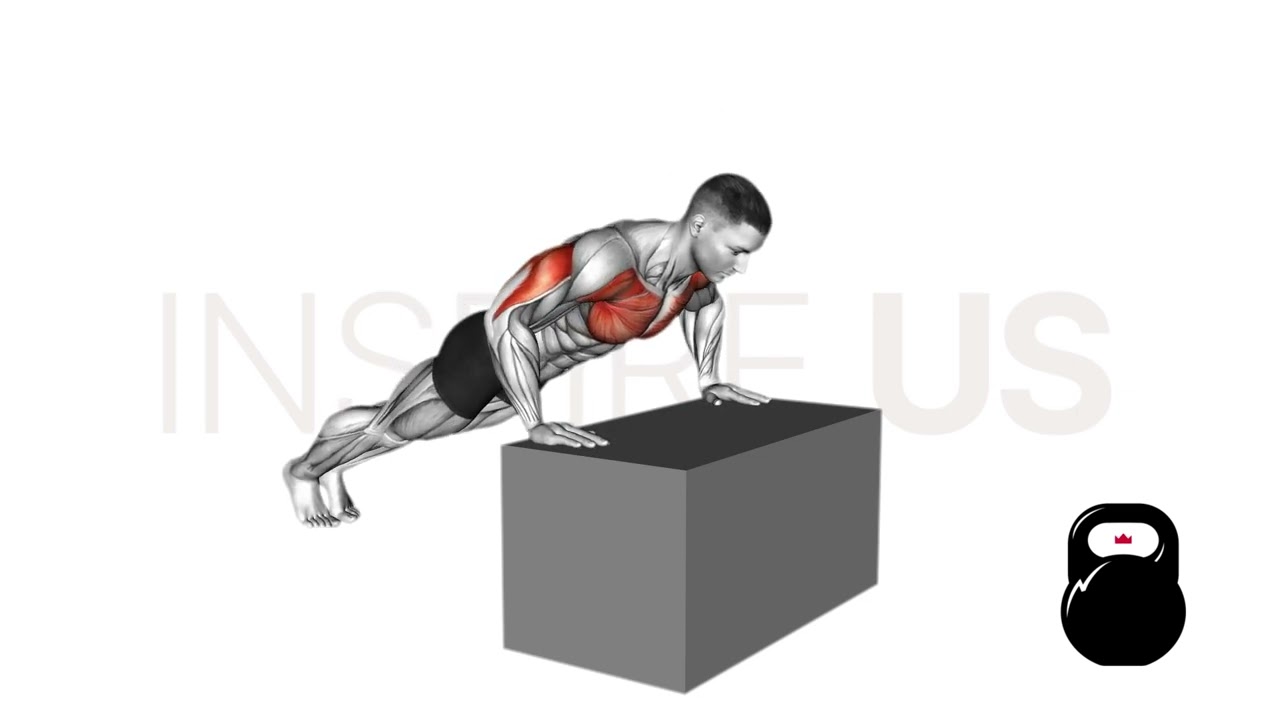Incline Push Up: Benefits, Muscles Worked, and More
Who Should Do Incline Push-Ups?
Incline push-ups are easier than regular push-ups, and as such are appropriate for nearly all individuals.
However, if there is a history of shoulder, elbow or wrist injuries, then it is best to avoid performing push-up variations altogether.
How to do an Incline Push-Up
To perform an incline push-up, the lifter will enter a push-up stance by setting their hands wider than shoulder-width apart along a bench or similar object, fully extending their legs behind them and contracting their core so as to create a straight and flat torso.
The body should form a straight line with as little as possible force coming from anywhere beneath the chest, as it is the triceps, deltoids and pectoralis muscles that should be worked during the exercise.
To begin, the lifter will bend at the elbows and slowly lower their torso towards the bench.
Once the chest is within several inches of touching it, the lifter will then push through the palms of their hands and slowly extend their elbows - returning to their original starting stance and thereby completing the repetition.
What Muscles are Worked by Incline Push-Ups?
Incline push-ups are a compound exercise, meaning that multiple joints are involved and summarily multiple muscles as well.
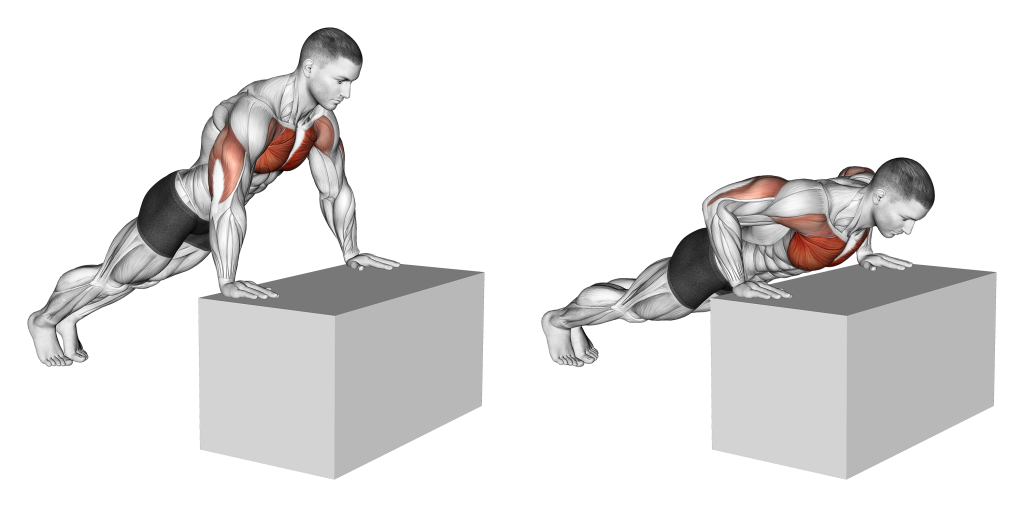
These muscles are divided according to the intensity and role they play within the movement, with primary and secondary movers being the muscles recruited in a dynamic capacity, and stabilizer muscles being those contracted isometrically.
Primary Mover Muscles
In terms of primary mover muscles, the pectoralis muscle group, triceps brachii and the anterior head of the deltoids play the most significant role.
Secondary Mover Muscles
For muscles also contracted dynamically but to a lesser extent, we have the serratus anterior.
Stabilizer Muscles
Although to a lesser extent than other push-up variations, incline push-ups will recruit the abdominal muscles, obliques and glutes in an isometric capacity.
What are the Benefits of Incline Push-Ups?
Exercise as a whole is beneficial - a fact that is considered to be general knowledge. However, the incline push-up takes things further by providing several other advantages that are specific to it and the few exercises like it.
Builds Chest, Arm, and Shoulder Muscle
Just as is the benefit of all other push-up variations, the incline push-up is an effective tool for training the muscles of the upper body - especially the pectorals and the triceps brachii.
With regular and form-perfect performance, the muscles of the upper body will grow in both strength and size.
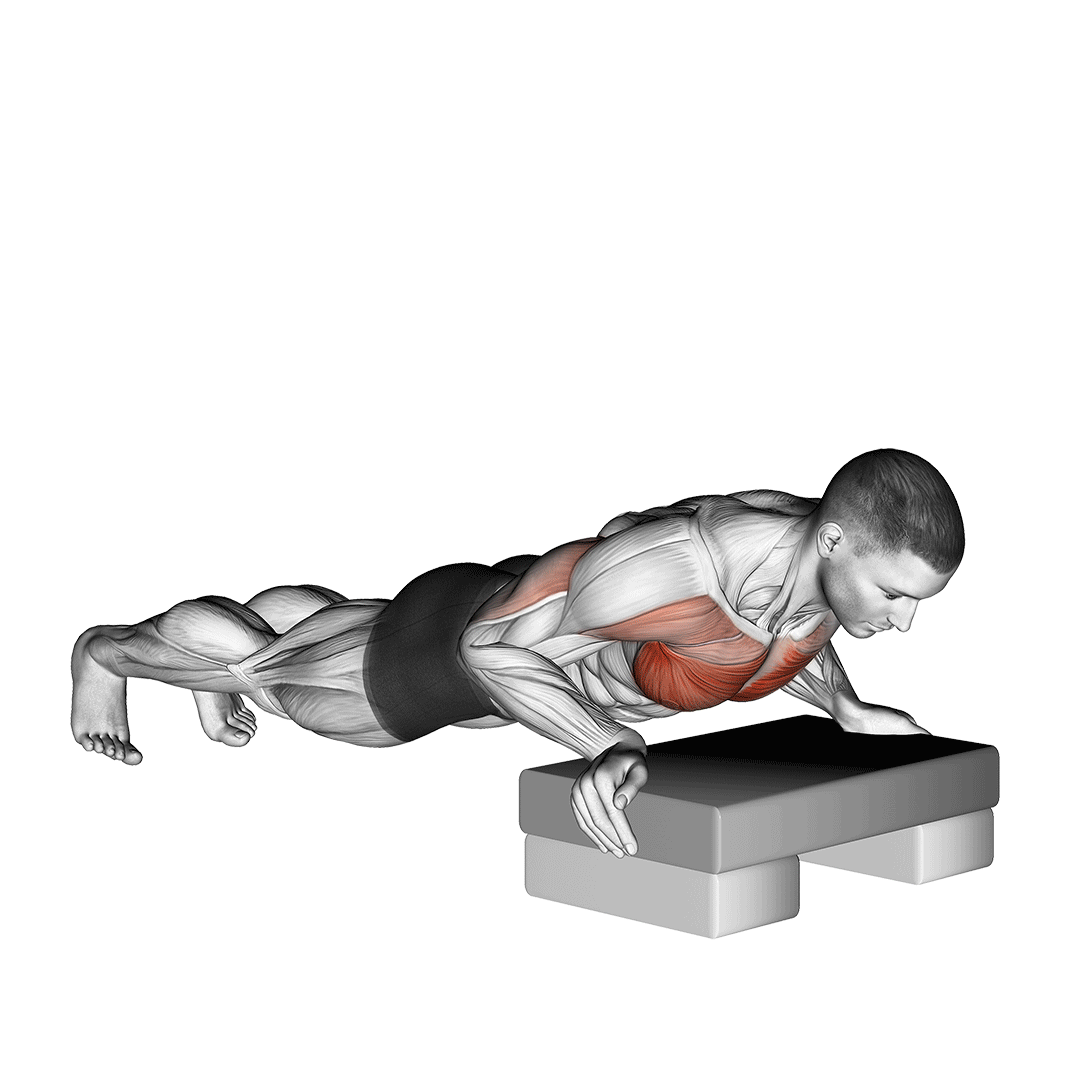
Lifters wishing to maximize the muscle growth they attain from the incline push-up will need to ensure that they are following a proper training program, of which should account for total training volume and allow for gradual progression to more difficult exercises.
Improves Core Stability
The incline push-up requires the body to remain rigidly straight and stable throughout each set, meaning that significant contraction of the core musculature will be needed - very much akin to that of the plank exercise.
Lifters who regularly perform the incline push-up will find that their abdominals, lower back and obliques grow more effective at isometric contraction, and that their core as a whole becomes more stable, reducing future injury risk.
Excellent as Progression, Accessory, or Carryover Exercise
The low intensity of the incline push-up allows it to be used for a variety of programming purposes, be it as a tool for maximizing workout volume or as a step to performing more difficult push-up variations.
Depending on the manner in which its volume is structured - as well as the presence of adjacent exercises in the workout session - lifters can take advantage of the incline push-up so as to reach their goals more readily.
To leverage the incline push-up as a training tool, the advice of a professional athletic coach is one of the best approaches - although more simplistic goals like being able to do a full push-up are simple enough for even novices to program.
Low Injury Risk and Highly Accessible
The incline push-up benefits from its simplistic and calisthenic nature - requiring no more than a suitably sturdy object to incline the torso with.
In addition to this low barrier of performance, the incline push-up is also far easier than many other push-up variations, and involves far less strain on the joints that are normally an issue for conventional push-ups. This makes the exercise accessible to individuals of even the most minimal levels of familiarity with resistance training.
Common Incline Push-Up Mistakes to Avoid
Although the incline push-up is relatively low-risk and easy to learn, there are a few mistakes that are more common than others, and should be avoided for a safer and more effective workout.
Incorrect Hand Placement
Be it by setting the hands too close or too far apart, performing the incline push-up with a less-than-optimal hand position can place the elbows and shoulders at greater risk of injury.
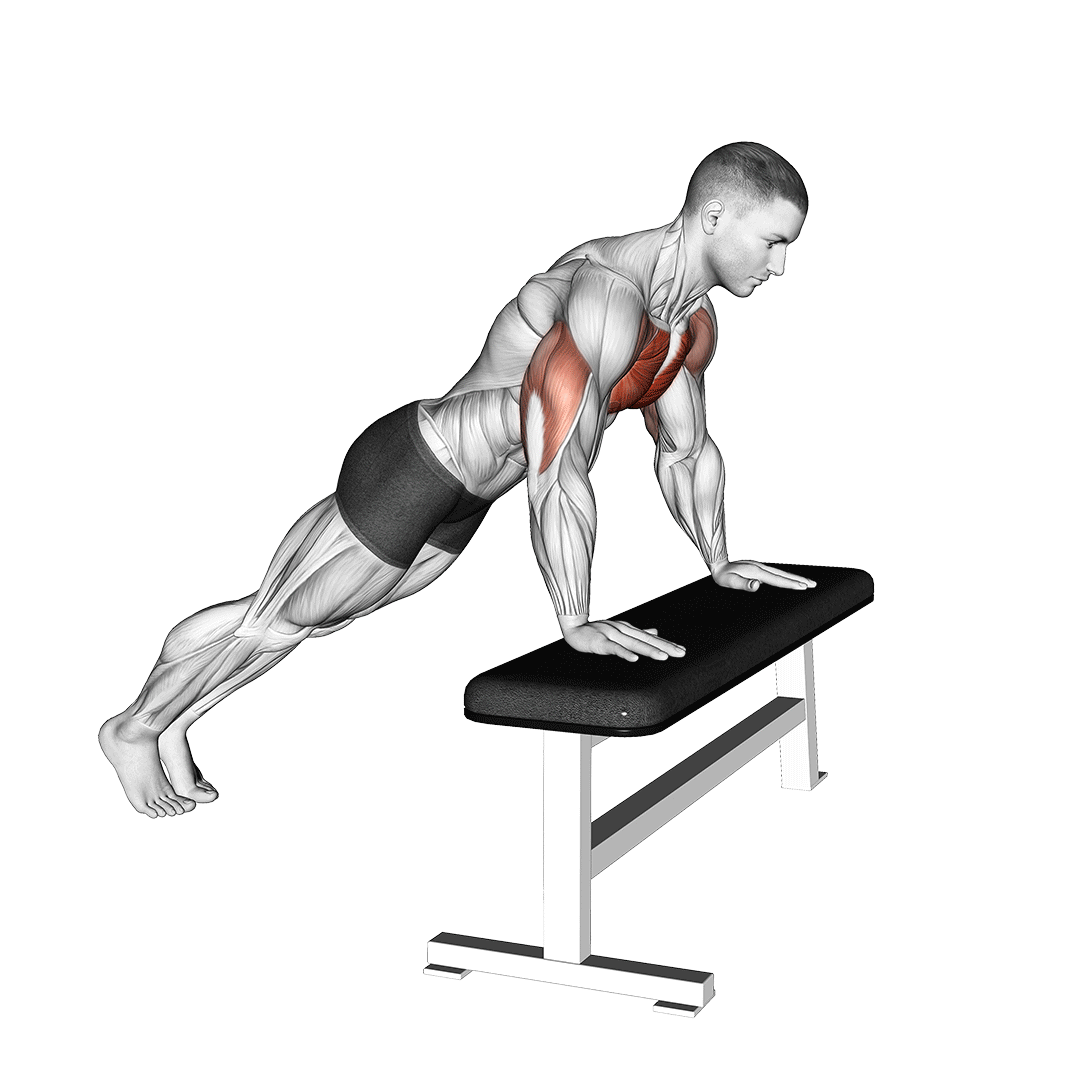
For the best results, the majority of individuals will find a hand placement slightly wider than shoulder-width apart to be the most comfortable stance.
Sagging Torso or Bent Legs
One common mistake of the incline push-up is poor torso stability as a result of failing to keep the body straight throughout the set.
By allowing the torso to sag or bend at the waist, or by failing to lock the knees out, the lifter will reduce the range of motion of the exercise, force other muscles to act as stabilizers and potentially injure themselves as they place the body in a disadvantageous position.
In order to perform the incline push-up correctly, the core musculature should remain contracted and the legs straight.
Performing the Exercise Too Rapidly
Rushing through the incline push-up will directly negate many of its benefits, as well as its usefulness as a muscle-building exercise.
Time under tension is a major component of muscular hypertrophy, and performing each repetition in a slow and controlled manner is important for ensuring the lifter’s safety and results.
Using an Object That is Too Short/Tall
The difficulty of the incline push-up is influenced by the height of the object that is inclining the torso (as depicted in the images above). Generally, the taller the object, the more vertical the lifter will be, and the easier the exercise is.
The opposite is also true, with shorter objects angling the lifter more horizontally and thereby shifting more weight towards the upper body.
For novices who find that the incline push-up is too difficult, picking a taller object may help.
Incline Push-Up Progression Exercises
For lifters using the incline push-up as a stepping stone to performing more difficult exercises, they may make use of the following chronologically-ordered progression exercises.
1. Knee Push-Ups
The knee push-up is simply a conventional push-up, but instead performed with the knees touching the ground, rather than the feet. This reduces how much weight is being lifted, and makes core stabilization significantly easier.

In truth, both the knee push-up and the incline push-up are similar in terms of intensity and general accessibility. Lifters may perform either exercise interchangeably - save in cases where core stability and abdominal strength are the limiting factor, where performing knee push-ups may be the better choice for progression.
2. Wide Grip Push-Ups
Once sufficient strength and technical skill has been developed to perform a full set of knee or incline push-ups, lifters may take to the wide grip push-up as an easier and more pectoral-focused step to the conventional push-up.
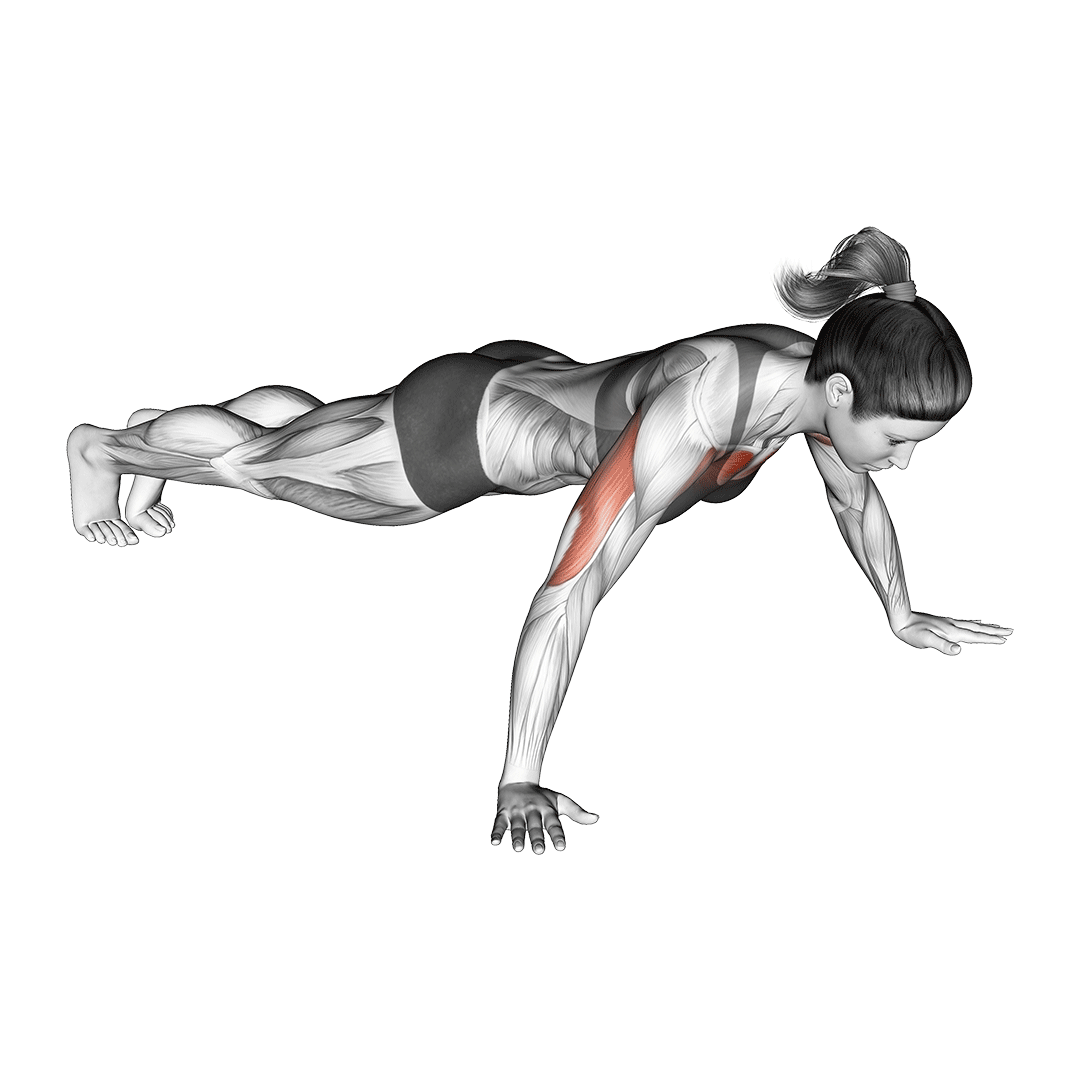
As the name implies, the wide grip push-up is a conventional push-up performed with the hands set significantly wider than normal - forcing the pectoral muscles to produce more force.
The wide grip push-up will allow lifters to build sufficient chest strength to perform regular push-ups safely, and will generally feature a shorter range of motion, making them comparatively easier as well.
3. Conventional Push-Ups
Finally, it is at this point in their training that the majority of individuals should be able to do a set of conventional push-ups. At this point, it is likely that the lifter is around the intermediate level of strength among their peers, and that they have a solid grasp of exercise mechanics.
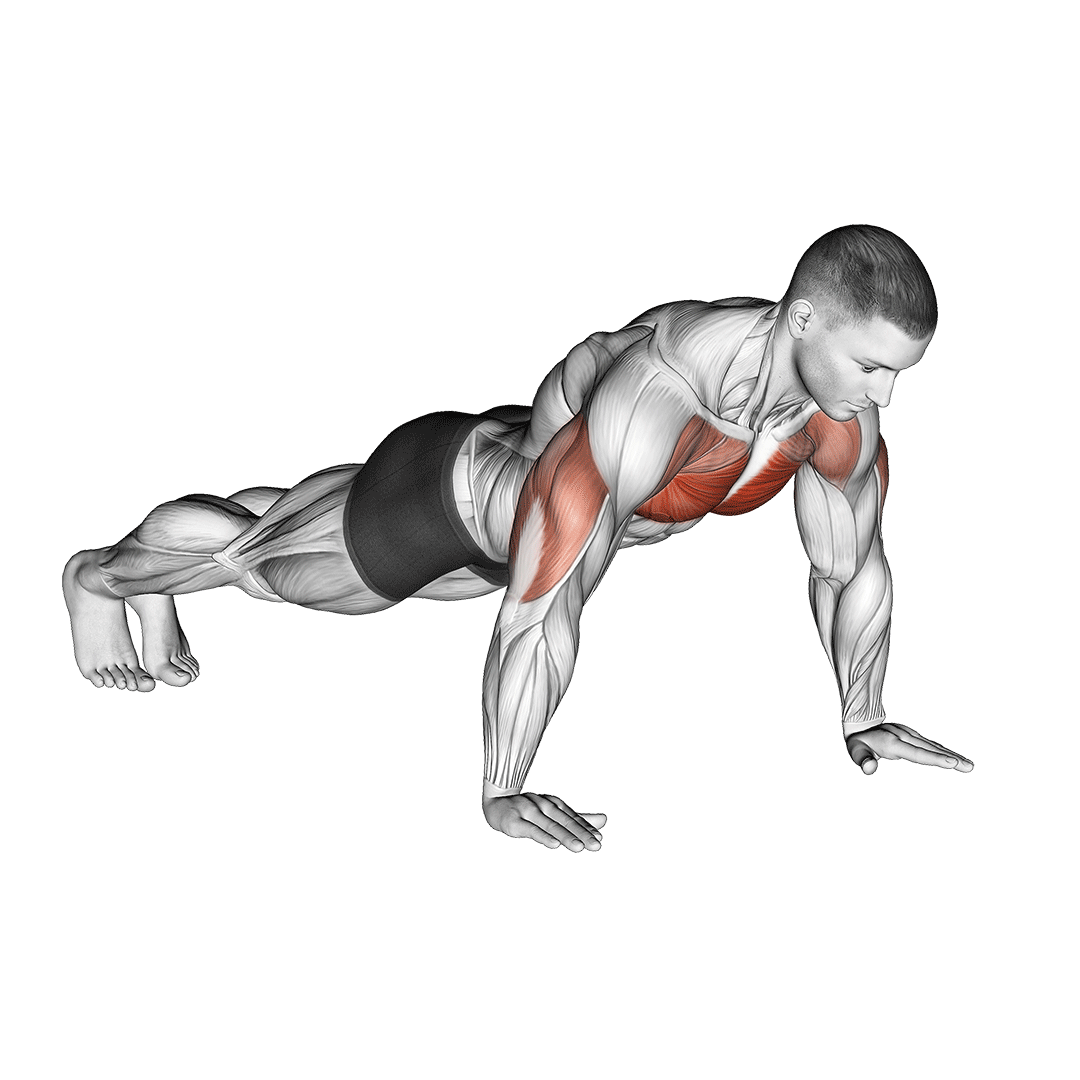
If so desired, they may practice the regular push-up before progressing even further towards more difficult exercises, like the decline push-up - or instead focus on performing high volume sets.
4. Decline Push-Ups
On the opposite end of the progression list is the decline push-up, of which is the opposite of the incline push-up in terms of torso orientation.
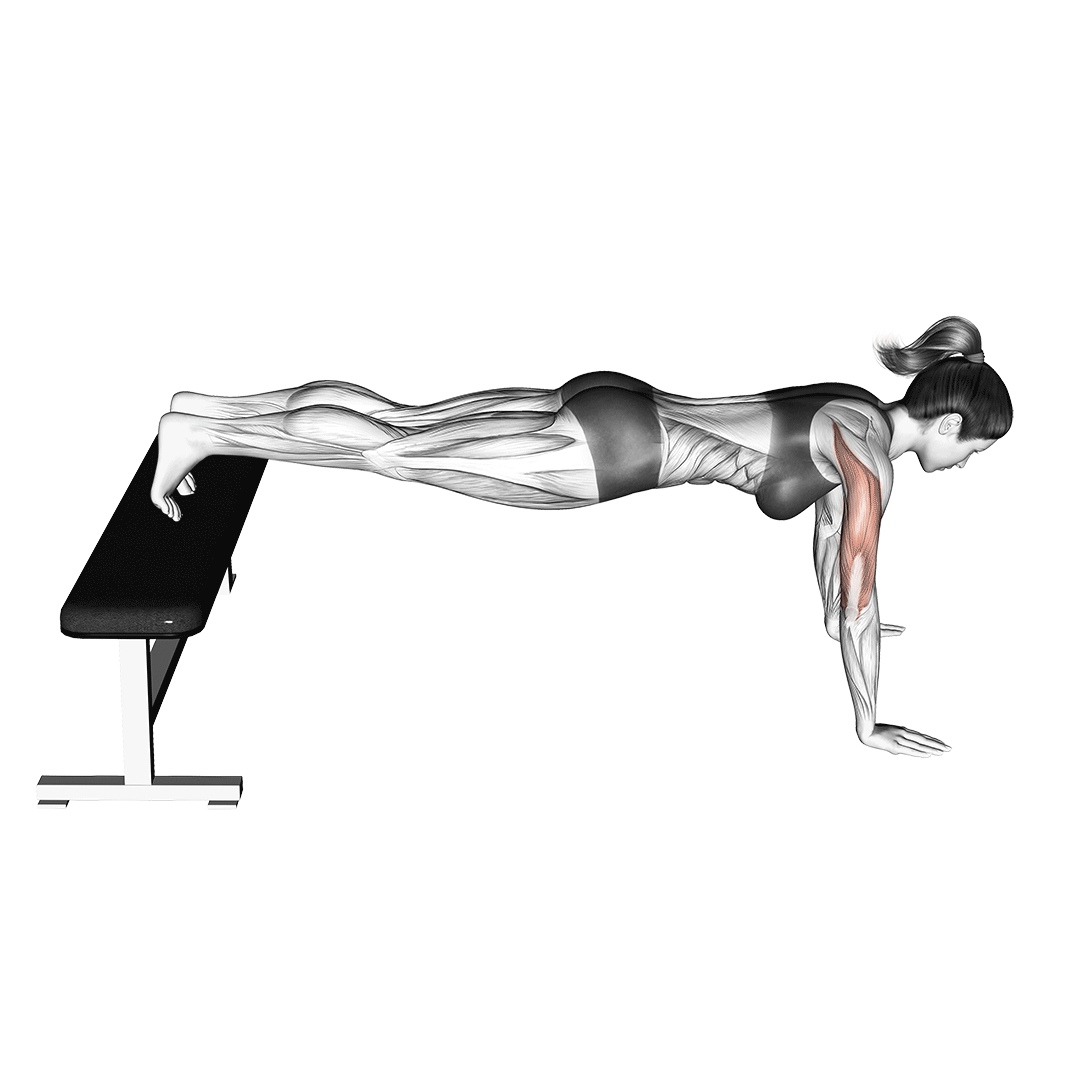
Rather than the head being pointed vertically upwards, the lifter will instead place their feet on an object higher than their torso, creating an even heavier and more difficult exercise than the regular push-up.
The decline push-up will allow lifters to build sufficient strength to perform advanced calisthenic exercises, as well as strengthen the muscles of the chest, shoulders and triceps to a far more intense level.
Frequently Asked Questions (FAQ)
Are Incline Push-Ups as Effective as Regular Push-Ups?
Not necessarily.
Incline push-ups are easier than regular push-ups, and as such provide a less intense training stimulus for individuals who can perform regular push-ups instead.
How Many Incline Push-Ups Should I Do?
While it will vary between individuals, a good number to aim for is 10-16 repetitions of incline push-ups in a set.
If performed with proper form, this number is generally a good sign that you are ready to move on to more difficult bodyweight exercises, like the dip or the regular push-up.
What Do Incline Push-Ups Work?
Incline push-ups primarily train the chest and triceps, but also work the front section of the shoulder muscles as well.
References
1. Suprak, David N; Dawes, Jay; Stephenson, Mark D. The Effect of Position on the Percentage of Body Mass Supported During Traditional and Modified Push-up Variants. Journal of Strength and Conditioning Research 25(2):p 497-503, February 2011. | DOI: 10.1519/JSC.0b013e3181bde2cf
2. Kowalski KL, Connelly DM, Jakobi JM, Sadi J. Shoulder electromyography activity during push-up variations: a scoping review. Shoulder & Elbow. 2022;14(3):325-339. doi:10.1177/17585732211019373

